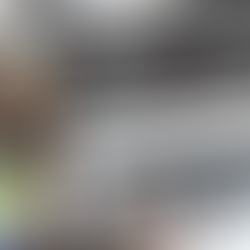Applied Digital Learning Journey Synthesis


Rooted in Growth, Ready to Lead: My ADL Reflection
When I began the Applied Digital Learning program at Lamar University, I wasn’t searching for transformation, I was looking for practical tools. What I found was something far more meaningful. This journey didn’t just give me strategies; it gave me a mindset shift. I stepped into a learning environment that invited me to take risks, ask better questions, and lead with intention. I expected to learn about technology, but I ended up learning about myself. I now understand that embracing a Growth Mindset isn’t just a helpful classroom tool, it’s a personal compass. Through setbacks, revisions, and the occasional moment of "What did I just get myself into?", I grew in ways that checklists and templates could never have taught me.
As I built my Innovation Plan to implement the Enriched Virtual Model in a K–4 environment, I realized that innovation isn’t always flashy or loud. Sometimes, it’s a quiet decision to shift a structure, amplify student voice, or trust that learners, even our youngest, can engage meaningfully in blended spaces. While working through 4DX and Influencer strategies, I learned that leading change means balancing personal will with collaborative purpose. These frameworks didn’t just support my project, they transformed how I approach leadership and team culture (Grenny et al., 2013; McChesney et al., 2012).
One of the most powerful ideas I encountered was from Thomas and Brown’s A New Culture of Learning. The idea that learning should be fluid, curiosity-driven, and socially connected gave me permission to break away from rigid models and reimagine my own practices. It challenged me to be less of a gatekeeper and more of a guide—one who curates meaningful experiences rather than delivering prepackaged content (Thomas & Brown, 2011). This insight helped me design with greater intentionality and flexibility, which became especially clear when I created my Pre-K rhyming unit using tools like Seesaw and Google Classroom. My understanding of instructional design deepened as I applied Fink’s 3 Column Table and Understanding by Design to real-world learning needs.
And wow, did I build. Over the course of this program, I created an ePortfolio that houses my reflections, projects, and evolving philosophy. I launched a blog to share insights with other educators. I designed a professional learning course that supports early childhood teachers in blended environments. I even developed a measurement strategy and action research plan to evaluate the impact of blended learning in my district. These weren’t just assignments, they were tools that helped me find my voice and use it.
Of course, growth rarely happens in a straight line. There are things I’d change if I could rewind. I’d give myself more time to marinate in the feedback, trust my instincts earlier, and spend less energy trying to “get it right” the first time. But that, too, is part of the process. I learned that messy growth is still growth. The version of me who began this program would be amazed at how much I’ve built, and how deeply I now believe in my capacity to lead meaningful change.
Now, as I prepare to step beyond the classroom and into more expansive leadership roles, I carry a new confidence. I don’t have all the answers, but I’ve learned how to find them. I don’t need a script, I have a strategy. And most importantly, I have a passion for helping educators, and students, thrive in learning environments that are dynamic, human-centered, and future-ready.
References
Grenny, J., Patterson, K., Maxfield, D., McMillan, R., & Switzler, A. (2013). Influencer: The new science of leading change
(2nd ed.). McGraw-Hill.
Thomas, D., & Brown, J. S. (2011). A new culture of learning: Cultivating the imagination for a world of constant change.
CreateSpace.
McChesney, C., Covey, S., & Huling, J. (2012). The 4 disciplines of execution: Achieving your wildly important goals. Free
Press.
Blog Posts




























